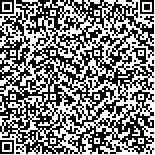下载中心
优秀审稿专家
优秀论文
相关链接
摘要

数学形态学滤波是从激光雷达数据中识别地面点、创建数字高程模型的一种重要方法,在应用中取得了较好的效果,但也具有一些明显不足。在分析现有方法优劣及城市地形特点的基础上,提出一种应用于城市环境的自适应形态学滤波算法。该方法采用分层识别策略:首先通过分割得到地面主体部分;之后利用正规化高度值寻找其余地面区域;最后估计地物覆盖区域地面点取值。采用三个不同分辨率、不同地形/地物特点的数据集进行了实验,结果表明该方法能有效识别地面和地物点,并解决了窗口尺寸限制、粗差误判等问题。
In this paper, an adaptive morphological filter was developed to detect nonground LIDAR points in urban area, based on the continuous region detection and a hierarchical recognition mechanism. First, all continuous regions are labeled, and major ground points are detected by the characteristics of spread and continuity. Second, detached ground points are recognized by the quality of continuity and normalized height. Third, the height within objects occupied regions is calculated by linear interpolation and smoothness. Three datasets from three urban areas, are selected in the test, with different point densities and landscape complexities. Qualitative and quantitative analyses have indicated that this filter could remove most nonground points effectively in moderate complex urban environments, with the advantages of automatic window size determination and outliers detection.

